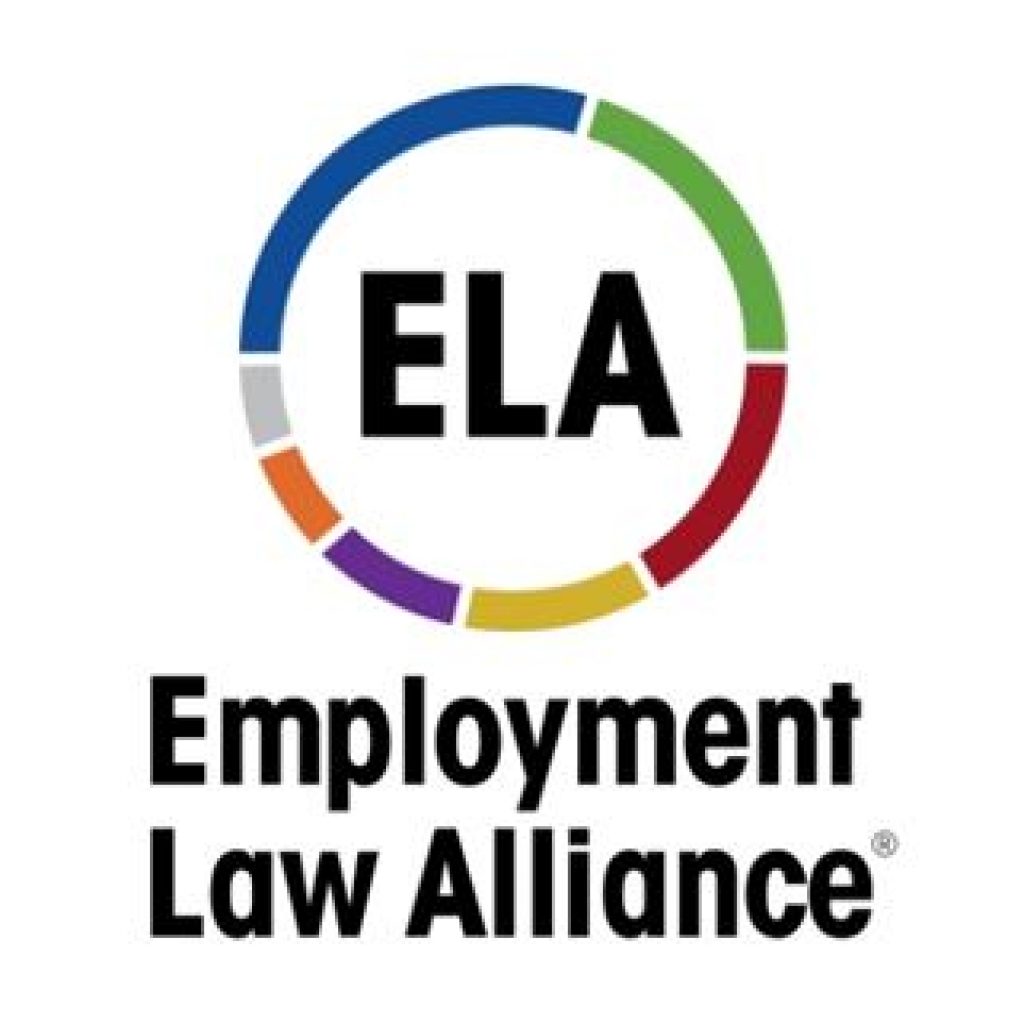Maryland’s “Draft” FAMLI Regulations – What Do They Say?
On January 29, 2024, the Maryland Department of Labor’s (MDOL) issued “draft” regulations to implement Maryland’s paid family and medical leave insurance (FAMLI) law, and it invited public comment. Starting January 1, 2026 (caveat below), this law will provide most Maryland employees with 12 weeks of paid family and medical leave, with the possibility of an additional 12 weeks of paid parental leave, as we have previously detailed in our E-lerts from April 12, 2023 and April 12, 2022. We have identified the following items of interest or significance to employers in the regulations.
Definitions. The following definitions are important:
- “Employees” do not include those who meet what is known as the ABC test, which is used to determine independent contractor status.
- “Equivalent-private insurance plan (EPIP)” applies only to either a purchased insurance policy from an insurance company approved by the State, or an MDOL FAMLI Division-approved self-funded private employer plan – not a combination of both.
- “Serious health condition” does not mimic the federal Family and Medical Leave Act’s well-established definition, but more broadly includes continuing treatment including home care by a “competent individual” (undefined) and organ/tissue/body part donation. Additional definitions are provided in the Claims section.
Contributions. The following points are significant:
- “Qualified employment” means employment that is performed in the State. In addition, employment that is performed partly in the State will be considered qualified in its entirety if the out-of-State employment is incidental to the State employment, including temporary or transitory employment and isolated transactions. It also includes employment where the base of operations or the place from which the employment is controlled or directed is in Maryland. It further includes remote employees living in Maryland where their employment is not performed in part in another State where the base of operations or place from which the employment is controlled or directed is located. These last provisions, which appear to deal with remote employees, are frankly unclear.
- The size of the employer is determined by their employees anywhere, not just in Maryland.
- Contributions and informational reports will be remitted quarterly, by the last day of the month following each quarter.
Equivalent-Private Insurance Plans. Many employers are interested in the option of an EPIP, rather than participating in the State program. It appears, however, that establishing an approved self-insured EPIP may be quite challenging, if not virtually impossible. Some of the more significant points include the following:
- EPIPs must still use the State plan’s forms for employees and health care providers, as well as employer notices.
- The EPIP must be equivalent in every way as to the reasons for the leave, the amounts and increments of leave, the benefit amounts, and the employee contribution amounts.
- The EPIP cannot impose additional conditions, restrictions or barriers on the use of leave.
- The EPIP must meet regulatory requirements for claims processing, reconsideration and appeals.
- If the EPIP fails to pay required benefits, the State may pay those benefits and the employer/EPIP administrator would be required to reimburse the State.
- After the initial 3 year period in which EPIPs must be recertified annually, they must then be recertified every 3 years.
- For employer self-insured EPIPs, the employer must obtain a surety bond from an authorized surety company in the amount equal to one year of expected future benefits. There are extensive specific requirements applicable to the surety bond’s form and contents.
- Self-insured EPIPs must also establish a separate account to hold the contributions and pay benefits.
- The FAMLI Division may review EPIPs for compliance at any time, and employers/administrators must provide any requested information and documents within 10 business days.
- A specific list of records must be retained for at least 5 years.
- Informational reports will be remitted quarterly, by the last day of the month following each quarter.
- Employers may terminate an EPIP after a year, with 30 days’ notice. The FAMLI Division may terminate an EPIP for various violations, including the failure to pay benefits (in whole or in part), failure to timely make benefit determinations, failure to maintain the surety bond, misuse of EPIP money, and failure to submit reports.
- There are extensive provisions regarding the situation where the employer intends to provide an EPIP but is not able to submit a complete application before August 31, 2025. However, an application must be submitted by November 1, 2025 for a self-insured plan and December 1, 2025 for a commercial plan.
Claims. This is a quite lengthy and detailed section of the regulations. Of particular note, there are extremely limited options for an employer to report fraud, and no guidance on how the FAMLI Division will handle such reports. Other important points include the following:
- “Alternative FAMLI purpose leave (AFPL)” means employer-provided leave specifically designated as a separate bank of time off for medical leave, family leave, and/or qualified exigency leave. With written notice, employers may require employees to use AFPL concurrently or in coordination (i.e. to supplement) with FAMLI benefits, as long as it is paid, not accrued, not subject to repayment upon employee departure, not available for general purposes, and available without requirement to exhaust another leave first. If the employee then declines to apply for FAMLI, their FAMLI eligibility will be reduced by the amount AFPL time taken. An employer may deduct the full amount of leave taken under both AFPL and FAMLI from the AFPL balance, even if only partial AFPL benefits were used.
- “General purpose leave” means employer-provided paid leave – such as general paid time off, personal leave, vacation leave, or sick leave – that is not AFPL. Neither the employer nor employee may require the substitution of general purpose leave for FAMLI leave. They may agree, in writing, to have it supplement FAMLI leave. Only the actual amount of supplemental leave used may be deducted from the general purpose leave balance. Employees may use sick leave prior to receiving FAMLI benefits without employer agreement, however.
- “Good cause” for not filing a complete claim application includes the employee’s serious health condition that prevents the timely filing, the demonstrated inability to access a means to timely file (e.g. natural disaster, power outage, prolonged Departmental system outage), or the employer’s failure to provide the requisite notice.
- “Kinship care,” which is one of the reasons for leave, includes both informal and formal kinship care as already defined in the Maryland Code.
- Applications may be submitted up to 60 days before the first day of requested FAMLI leave.
- In seeking FAMLI leave for bonding or care for another, the employee must submit proof of relationship, including an affidavit or official documents. The employee must also submit official documentation of the qualifying event.
- The various certifications for the employee’s own or family member’s serious health condition, military exigency leave, and military caregiving leave generally track the FMLA’s requirements.
- Employers must respond to a notice of claim application within 3 business days, otherwise the application is considered complete. The FAMLI Division will investigate any employer challenges. But the Division may consider a late submission and negate any ongoing benefits. Job and anti-retaliation protections cease when benefits cease in such a case. Notably, this appears to be the only path for employers to report fraud, and it is wholly lacking in any kind of detail as to how the FAMLI Division will handle such information. Problematically, it appears that the employer must wait for the FAMLI Division to stop benefits before taking any kind of employment action based on the fraud.
- Employees are to update their claim application within 10 days for any changes to the leave basis, start, end, duration, and receipt of workers’ compensation benefits.
- If an employee is taking leave to care for a family member and the family member dies, benefits are paid until the earlier of 7 days after the death or the previously approved end date. This effectively may provide paid bereavement leave. The employee must provide notice of the death within 72 hours.
- For intermittent FAMLI leave, requests must be submitted every two weeks. Intermittent leave must be taken in increments of at least 4 hours, unless the shift is less than 4 hours. Benefits will not be paid for leave that exceeds the certified amount without an updated certification.
- Employers must give notice of FAMLI leave and benefits: 6 months prior to the commencement of benefits, at hire, annually, 30 days prior to changes to the FAMLI procedures or plan, and when the employer knows that a leave may be eligible for FAMLI benefits. The employee is considered notified if there is a written or electronic signature of receipt.
- Employees must give notice of their need for foreseeable (30 days) and unforeseeable (as soon as practicable) FAMLI leave. Employers may waive notice, and waiver is presumed if the employer did not notify the employee of the need to provide notice to the employer, or if the employer fails to assert this in response to a notice of claim from the FAMLI Division.
- Employees taking intermittent leave must make a reasonable effort to schedule the leave so as not to unduly disrupt business operations. They must also provide reasonable and practicable notice of the reason and duration of their intermittent leave, although apparently not as to the leave itself, which is not helpful for employers.
- If employees fail to provide such notice of intermittent leave, they may be held accountable under the employer’s attendance policy. But since the notice provision only applies to the overall need for intermittent leave, and not each incident of leave, it is unclear how this would apply. In addition, the employer must notify the FAMLI Division of the notice failure.
- In addition, if the employee’s intermittent use is inconsistent with their State approval, the employer may request additional information about their use of leave. But there is no provision that allows employers to request additional information with regard to the use of FAMLI leave in a block.
- Employees are not eligible for FAMLI benefits if they are receiving either unemployment or workers’ compensation benefits.
Dispute Resolution. Of particular note, employers are not permitted to be involved in the dispute over claims:
- The parties to the dispute resolution procedures include a claimant, an EPIP administrator and the Division, but oddly not the employer.
- Employers may request supervisor review if their application for an EPIP was denied or their EPIP was involuntarily terminated. Requests for review must be filed within 10 business days, in writing, with an explanation of why the decision was in error. Decisions will be made within 20 business days, and there may be an informal conference to discuss the review request during that time.
- Employees may request reconsideration of a denial of benefits within 30 days (apparently not business days), in writing, with an explanation of why the decision was in error. Notice is provided to all “parties,” which, as noted above, does not include employers. Decisions will be made within 10 business days, and there may be an informal conference to discuss the review request during that time.
- Employees may also appeal a claim denial, following a request for reconsideration. The appeal must be filed within 30 days. Again, notice is provided to “parties.” There may be an informal mediation process at the discretion of the FAMLI Division. A hearing will normally be held within 30 days of the filing, with notice to the “parties.” There are detailed procedures related to the hearing itself.
Enforcement. Although there is a section on enforcement, there are no actual draft regulations provided at this time.
The Regulatory Process and the Law’s Status. Normally when a government agency is directed by law to issue regulations, they first issue official “proposed regulations” that are published in the Maryland Register, and the public is invited to submit comments for some period of time. After the public comment period is closed, the agency then considers the submitted comments and may make changes before issuing “final regulations.”
Here, however, the MDOL’s FAMLI Division has taken a decidedly different and much more informal and inclusive approach. Over the summer, it engaged in a phased process in which the public was invited to participate in the discussion of six different topic areas, leading to the release of “Draft Outlines” of possible regulations for each topic area. The public was then again invited to provide comments on the Draft Outlines, which the MDOL apparently took into account before issuing these “draft” regulations. These are not the official proposed regulations, however. The MDOL has stated that it will issue those at a later point for public comment (yet again) in accordance with the formal regulatory process. But for now, interested parties may submit comments to the FAMLI division: FAMLI.policy@maryland.gov.
Above, we noted a caveat with regard to the effective date of benefits, which also applies to the employer/employee contributions. As some may recall, this law was passed in the 2022 General Assembly session, with contributions beginning in October 2023 and benefits beginning in January 2025. There were changes to the law during the 2023 session, however, including a delay in contributions to October 2024 and benefits to January 2026. At this point, the MDOL is behind a bill in the current session that would further delay the effective dates – this time to July 1, 2025 for contributions and July 1, 2026 for benefits – in addition to making some additional changes. Depending on what happens this session, the current “draft” regulations may require additional changes.
Stay posted for additional developments, of which there will be many.







